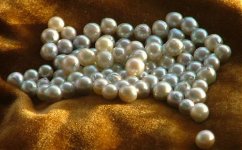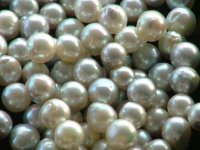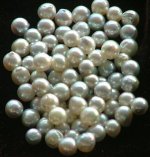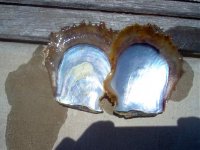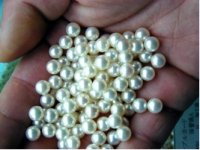Caitlin
Well-known member
- Joined
- Dec 11, 2004
- Messages
- 8,502
This article is very up to date. Aycee found it. Thanks!
I thought this part was especially interesting:
Australians have always been known for their pioneering spirit. Now, a handful of Aussie entrepreneurs are competing with Japan and China to produce the world’s largest, most beautiful akoya pearls.
I thought this part was especially interesting:
I also thought the school of aquaculture is worth keeping an eye onWhat’s more, Williams has discovered a native oyster species that “bridges” the Pinctada maxima — the oyster which produces the larger South Sea pearls — and the Pinctada fucata, the Australian akoya oyster.
“We can produce the same size pearl as the South Sea, but cheaper, and with a nice luster. It can grow up to 12 mm,” Williams says. They discovered the new species by accident, and aren’t even sure precisely how it relates to other native oysters.


TOP: Akoya pearl production starts with spats, or baby oysters, that are suspended on lines in the water.
ABOVE: Australian akoya pearl companies hope to produce quality pearls, such as those seen here. Photos courtesy Port Stephens Pearls. “The species is yet to be clearly identified from a taxonomic viewpoint, and probably needs some serious genetic work for identification. However, we believe it is likely to be mostly aligned with Pinctada maculata,” confirms Kerrod Beattie, acting manager of Aquaculture Policy and Management at the Queensland DPI&F. Pinctada maculata is a species related to the oysters which produce black pearls. “The ‘type’ appears to have some characteristics that lend itself to produce a pearl with excellent coloration, and as the host shell grows relatively large, it appears to be able to produce a large pearl. I suspect that the 12 mm would be the top end of the scale, and only harvested pearls will be able to verify this claim.”
Aquaculture scientists at James Cook University in Townsville, Queensland, have studied the feasibility of akoya farming in Queensland and New South Wales for several years and are cautiously optimistic.
“My understanding is that [Australian akoyas] are at least the equal of Japanese and Chinese akoya. . . . There is considerable scope for developing large-size akoyas here,” says Paul Southgate of Cook’s School of Marine & Tropical Biology. “I think we can safely assume that there will be expansion of akoya production in Australian waters, but in terms of the impacts of these ventures on the overall productivity of akoya pearls, it is difficult to estimate at this stage.”
Last edited:

